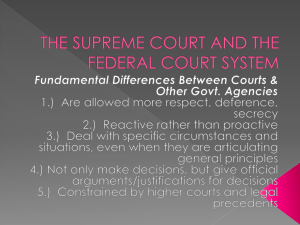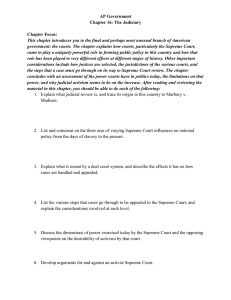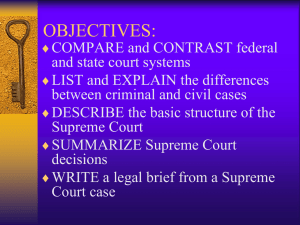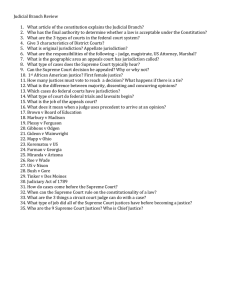The Supreme Court
advertisement
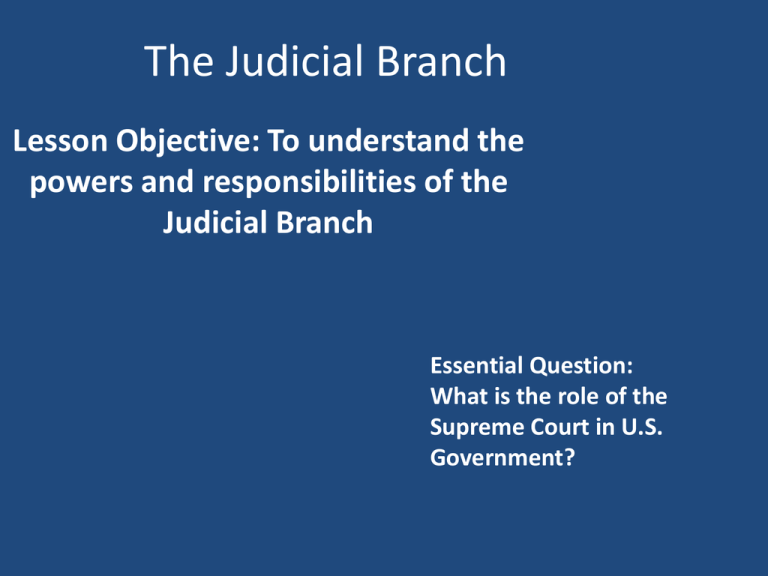
The Judicial Branch Lesson Objective: To understand the powers and responsibilities of the Judicial Branch Essential Question: What is the role of the Supreme Court in U.S. Government? The American Legal System • State Courts • Federal Courts – – – – Three tiers Trial Courts- hear cases first have original jurisdiction Appellate Courts- decide questions of law Supreme Court & other high courts • Supreme court has both original and appellate – 6% of cases are original in Supreme Court • Jurisdiction- right to hear the case • District Courts – Lowest federal courts • Have original jurisdiction – 94 districts at least 1 in each state – Involve federal government as a party – Constitutional question – Civil suite where parties are form different states Federal Court System • District Courts – Lowest federal courts • Have original jurisdiction – 94 districts at least 1 in each state – Involve federal government as a party – Constitutional question – Civil suite where parties are form different states • Courts of Appeal – 11 circuit courts + DC court of appeals • Only hear cases that are appeals- NO NEW TESTIMONY • Binding only in their district- do not have national precedent • The Supreme Court – 9 Judges – President nominates the Chief Justice – Only deals with cases with national consequences Appointments to the Supreme Court • Justices are picked for the following reasons: – Competence – Ideological or Policy Preference – Rewards – Pursuit of Political Support – Religion – Race and Gender • Confirmation Process – Investigation – Lobbying by Interest Groups – Full Senate votes on Confirmation Deciding a Case • Deciding to hear a case • -About 9,000 cases reach Supreme Court a year – – – – 2003-2004 term heard 90 cases Writ of certiorari – review of appellate court case In forma pauperis- comes from criminal law Almost all are writ of cert. • Conference Vote – Non-binding vote to see where the justices think they will vote • Opinions – Majority opinion- court’s ruling; becomes law – Concurring Opinion- agrees with ruling but not reasoning – Plurality- winning side but not majority- accompanied by concurring opinions – Dissenting Opinion- losing side of the arguement How They Vote • Legal Factors – Judicial Philosophy • Restraint vs. Activism – Precedent • Built on prior cases • Extra-legal Factors – Personal Experience – Ideology – Strategic Voting – Public Opinion




